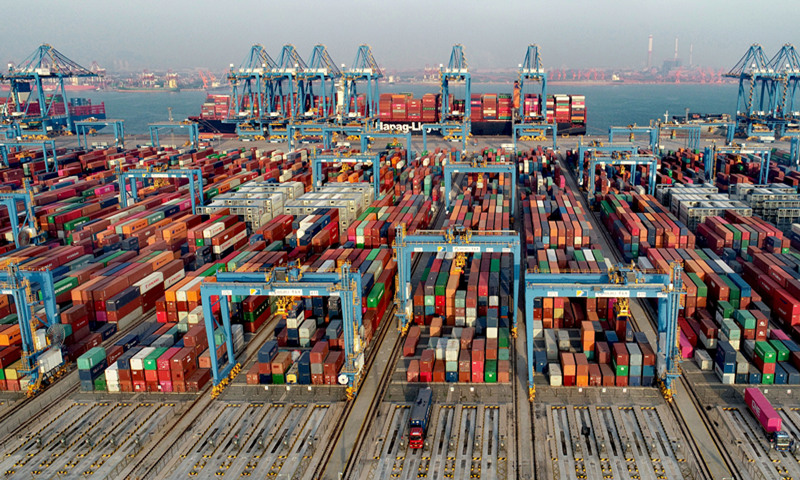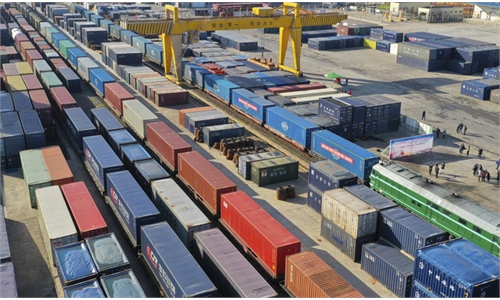
A fully automated wharf at the Qingdao Port in the Free Trade Zone (FTZ) in East China's Shandong Province is bustling. The FTZ, open for one year, focuses on the development of modern trade, logistics, finance and advanced manufacturing. Over the past year, more than 5,000 enterprises have been established there, with investment of more than 60 billion yuan ($9.13 billion). Photo: cnsphoto
China's foreign direct investment (FDI) jumped 6.2 percent year-on-year to reach a record high of 999.98 billion yuan ($144.37 billion) last year, data from the Ministry of Commerce (MOFCOM) showed on Wednesday.
Analysts said that the country is poised to overtake the US and regain the title as the world's top destination for FDI, thanks to its effective anti-epidemic measures that allowed factories to restart while production in the rest of the world was still partly grounded.
China's actual use of FDI rose in three dimensions - total amount, range of growth and world share, according to a statement on the website of the MOFCOM. It noted that such gains bucked the global trend of slumping FDI amid the COVID-19 pandemic.
FDI from the top 15 countries and regions surged 6.4 percent year-on-year, taking up 98 percent of the FDI inflow.
Investments from the Netherlands and the UK led, with rates of 47.6 percent and 30.7 percent, respectively. Investment from ASEAN to China was up 0.7 percent.
More FDI went into the services and high-technology sectors. The actual use of FDI in the services industries grew 13.9 percent, while that of high-tech industries rose 11.4 percent, according to the MOFCOM.
Globally, FDI flows are likely to have dived 30-40 percent year-on-year in 2020, according to a report by UNCTAD.
China could take the crown from the US as the hottest spot for foreign investment in the next couple of years, analysts said, highlighting the country's ability to secure stable production for the world when global supply chains have been fractured by the coronavirus outbreak.
In 2019, the US was the largest recipient of FDI, attracting $251 billion in inflows. This was followed by China with flows of $140 billion, according to another report issued by UNCTAD.
"The huge FDI flows to China are in stark contrast to other major economies such as the US and Europe last year, after investment fled abroad due to uncertainties over production and coronavirus control," Cong Yi, a professor at the Tianjin University of Finance and Economics, told the Global Times on Wednesday.
The sheer size of a 1.4-billion consumer market would also draw in foreign investments that bet big on China's robust economic recovery.
In 2020, China was the only major economy to expand, with a GDP growth rate of 2.3 percent. Consumer spending represented 54.3 percent of total economic output, marking a new high, data from the National Bureau of Statistics showed.
Cong noted that the scope for China's FDI expansion is huge, fueled by the signing of the Regional Comprehensive Economic Partnership, the completion of the China-Europe bilateral investment treaty negotiations, and government measures to further open up the market.




